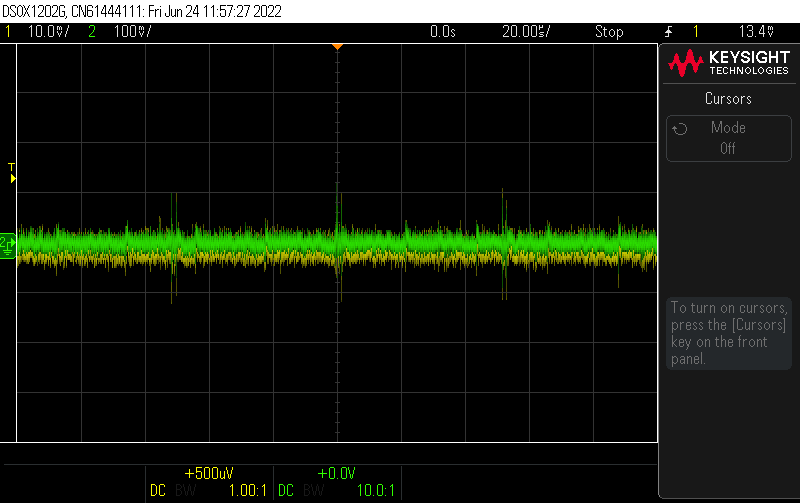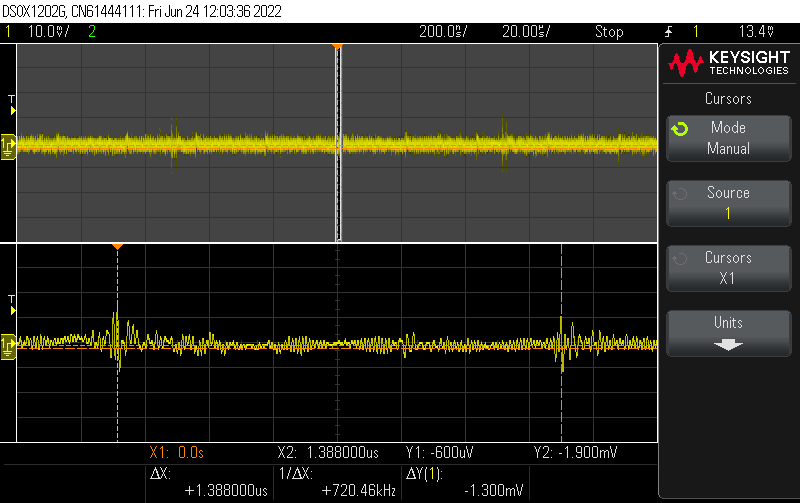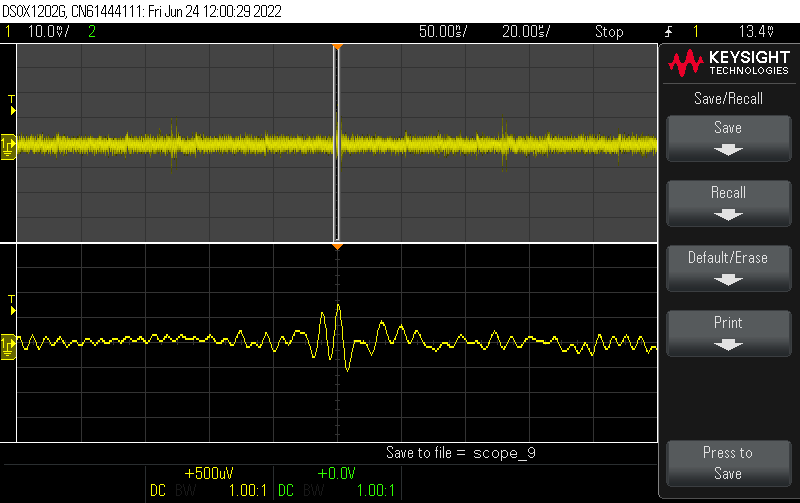Evaluating noise at input of DSO (Digital Storage Oscilloscope)
EXIT
by Michael Gordon using a Keysight DSOX1202G oscilloscope with signal generator. (not using the sig gen for
this demonstration)
While looking at audio signals from a Crown IC-150 Preamplifier, Monitor Jack, the audio tends to be less than
100 millivolts. At 10 mv per division, there's rather a lot of noise, especially impulse noise as seen in this
screenshot. Spikes are about 50 millivolts peak-to-peak and the noise between spikes is about 10 mv peak-to-peak.:

Wrapping the audio cable 8 turns around a 7 inch ferrite rod cut the noise in half (approximately):

The strongest impulses happen at a rate 32 kilohertz, each impuse is actually two spikes 1.38 microseconds apart. Using
the cursors function, place one cursor on each of the two spikes and read the bottom row for the time between and
the resulting frequency. I suspect that this may be the turn-on spike and a turn-off spike in the switching power
supply of the computer. A "buck converter" will have very brief high voltage duty cycle smoothed out to steady low
voltage DC.

Zooming in one one of th spikes reveals a ringing at 100 megahertz. The scope cursors provide the period between
adjacent peaks (or any other chosen thing) and also the resulting frequency. Notice that the 100 megahertz ringing
exists pretty much everywhere but peaks at the 32 khz rate. It is further reduced by activating the 20 MHz iput
bandwidth limiters (filters). What I probably need here is something like a 10 or 20 KHz audio filter.
The source of most of this is the nearby Dell T3500 computer. It's switching power supply is always on even when
the computer is turned off. The power cable is phyiscally unplugged from the computer to finally stop this noise.
Testing for possible ground loop; I operated the scope from a Goal Zero battery/inverter device. No change on
interference, so the ground loop isn't getting in through the scope ground pin on the power cord. On the other hand, the pre-amp
uses a non-polarized power cord so maybe plugging it in the other way round would reduce this noise.





